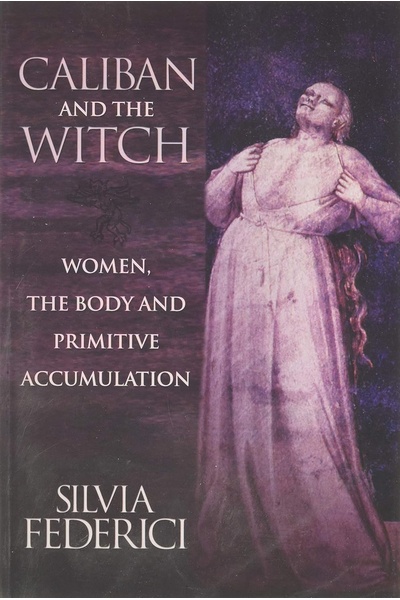The Dialectic of Sex
A radical feminist masterwork proposing that technological revolution in reproductive control is key to women's liberation, offering a feminist transformation of Marxism.

📝 Book Review
“The Dialectic of Sex” is a groundbreaking work published by American radical feminist theorist Shulamith Firestone in 1970, occupying a unique and important position in the history of feminist theory through its bold theoretical innovations and revolutionary social visions. Firestone skillfully applies Marxist class analysis to the study of gender relations, creating an entirely new theoretical perspective for understanding the fundamental causes of women’s oppression.
Firestone’s core theory builds upon a radical and profound insight: she argues that gender division represents humanity’s oldest and most fundamental class division, even more basic than economic class divisions. In her analytical framework, biological reproductive function becomes the fundamental source of women’s oppression. This viewpoint overturns traditional historical materialist analysis by placing biological factors at the center of social analysis.
She boldly proposes that precisely this biological inequality—women bearing the function of reproduction—constitutes the foundation for all other forms of gender inequality. This biological determinism, while controversial, provides a framework for understanding how seemingly natural differences become the basis for systematic social oppression.
The Tyranny of Reproduction
In the concept of “reproductive tyranny,” Firestone demonstrates the profundity of her theoretical thinking. She argues that women’s reproductive function fundamentally limits women’s social participation, preventing women from freely participating in public life and economic activities as men do. In her view, as long as reproduction remains an exclusive function of the female body, true gender equality cannot be achieved.
Therefore, she proposes that only through technological means to fundamentally change reproductive methods can women achieve true liberation. This analysis connects biological constraints to social and political limitations, arguing that liberation requires transformation at the most fundamental biological level rather than merely legal or cultural changes.
Firestone’s concept of reproductive tyranny extends beyond individual experiences to encompass systematic ways that reproductive capacity constrains women’s possibilities. She demonstrates how pregnancy, childbirth, and childcare create dependencies that limit women’s economic autonomy and political participation, regardless of their individual desires regarding motherhood.
Technological Utopia and Artificial Reproduction
More radically, Firestone envisions an imaginative technological utopia. In her ideal society, artificial reproductive technology would completely liberate women, with reproduction no longer being women’s exclusive burden but a responsibility shared by the entire society. This technological revolution would fundamentally change human existence, creating a truly equal society.
Although such visions seemed overly advanced at the time, they demonstrated her boldness as a theorist and her desire for thorough transformation. Firestone’s technological optimism reflects broader utopian thinking in 1960s radical movements, but her specific focus on reproductive technology was revolutionary within feminist theory.
Her vision includes not only artificial wombs and external gestation but comprehensive social reorganization around the elimination of reproductive-based inequality. This technological transformation would enable the creation of new forms of human relationships freed from biological constraints and the power dynamics they create.
Feminist Transformation of Marxism
One of Firestone’s most important theoretical innovations is her feminist transformation of Marxism. She extends historical materialist analysis to the realm of gender relations, creatively proposing the concept of “sexual historical materialism.” In her theoretical system, gender contradictions are considered more fundamental than class contradictions, a viewpoint that caused tremendous shockwaves in leftist theoretical circles at the time.
This theoretical contribution laid important foundations for the later development of socialist feminist and Marxist feminist theory. Firestone argues that Marx’s analysis of class struggle must be supplemented with analysis of sex struggle, and that the overthrow of capitalism is insufficient for women’s liberation without addressing biological sources of inequality.
Her feminist materialism proposes that just as economic systems can be revolutionized, so too can biological and reproductive systems through technological intervention. This creates a materialist framework for understanding gender oppression while maintaining revolutionary optimism about possibilities for transformation.
Critique of Family Structure
Simultaneously, Firestone provides ruthless criticism of family institutions. She argues that the nuclear family is not merely society’s basic unit but the cornerstone of patriarchal power structures. In her analysis, traditional family structures serve as important mechanisms for maintaining male dominance and therefore must be completely abolished to achieve true women’s liberation.
This radical critique of family institutions caused strong social reactions at the time. Firestone argues that the family serves as the primary institution through which gender roles are reproduced and patriarchal values transmitted, making it a central target for feminist transformation.
Her analysis extends beyond critique to envision alternative forms of social organization based on collective child-rearing, communal living arrangements, and relationships freed from economic dependency and reproductive obligation.
Radical Social Proposals
Firestone’s radical proposals encompass all aspects of social life. She advocates for the development and application of artificial reproductive technology, proposes socializing child-rearing, calls for complete abolition of traditional family structures, and even supports children having political and economic rights.
These proposals remain extremely radical even today, but they reflect Firestone’s deep thinking and firm conviction about thorough social transformation. Her proposals for children’s liberation, including economic independence and sexual autonomy, challenged fundamental assumptions about childhood, dependency, and protection.
The comprehensiveness of Firestone’s vision demonstrates her understanding that gender liberation requires transformation of all social institutions and relationships, not merely legal or political reforms.
Impact and Influence on Feminist Theory
The influence of “The Dialectic of Sex” is profound and complex. Positively, this work greatly advanced radical feminist theory development and inspired in-depth discussion about the relationship between reproductive technology and women’s liberation. It significantly influenced later ecofeminist and cyberfeminist theory, providing important intellectual resources for these emerging theoretical fields.
Firestone’s work contributed to radical feminist emphasis on the political nature of the personal, demonstrating how seemingly private biological experiences serve public political functions. Her analysis influenced subsequent feminist technology studies and bioethics discussions.
The book’s impact extends to contemporary debates about reproductive rights, surrogacy, genetic engineering, and artificial intelligence, with Firestone’s framework providing tools for analyzing how technological developments might either enhance or diminish women’s liberation.
Criticisms and Controversies
However, Firestone’s theory also faces considerable controversy and criticism. Her excessive optimism about technology has been criticized as technological determinism, ignoring the complex social conditions and potential risks of technological development. More importantly, her theory is considered to ignore many women’s positive experiences of motherhood and deep emotional connections, making her theory somewhat disconnected from many women’s actual lived experiences.
Additionally, her theory has been criticized as overly Western-centric, lacking sensitivity to women’s experiences in different cultural contexts. Critics argue that her vision of liberation through technology reflects privileged assumptions about access to advanced medical and reproductive technologies.
Some feminist scholars have also criticized Firestone’s biological reductionism, arguing that focusing solely on reproductive differences ignores the social construction of gender and the possibility of achieving equality without eliminating biological differences.
Contemporary Relevance and Technological Developments
Despite controversies, in today’s era of rapid development in assisted reproductive technology, many of Firestone’s predictions are being partially realized. The development of technologies such as in vitro fertilization, surrogacy, and egg freezing has indeed changed women’s relationship with reproduction to some extent.
Her theory retains important value and inspirational significance for understanding the complex interactions between technological development and gender relations. Contemporary developments in artificial wombs, genetic engineering, and reproductive technologies continue to raise questions that Firestone’s framework helps analyze.
Current debates about genetic editing, designer babies, and artificial intelligence’s potential to transform human reproduction demonstrate the continued relevance of Firestone’s insights about the revolutionary potential of technology to transform gender relations.
Theoretical Legacy and Ongoing Debates
“The Dialectic of Sex” continues to influence contemporary feminist theory, particularly in areas where technology and gender intersect. Firestone’s emphasis on the need for material transformation of reproductive conditions provides frameworks for analyzing how technological changes might advance or hinder feminist goals.
Her work anticipates many contemporary debates about bioethics, reproductive justice, and technological equality, while her radical vision continues to challenge incremental approaches to gender equality. The book serves as a reminder that comprehensive liberation may require more fundamental transformations than legal or cultural reforms alone.
Firestone’s legacy includes not only her specific technological proposals but also her method of analyzing oppression at its perceived biological roots and her insistence that feminist theory must grapple with material conditions rather than focusing solely on cultural or ideological change.
Intersection with Contemporary Bioethics
Contemporary developments in reproductive technology, genetic engineering, and artificial intelligence raise many of the questions that Firestone explored in her visionary work. Issues such as commercial surrogacy, egg donation markets, and genetic selection technologies require the kind of feminist analysis that Firestone pioneered.
Her framework provides tools for analyzing how new reproductive technologies might either enhance women’s reproductive autonomy or create new forms of exploitation and control. These questions remain central to contemporary feminist bioethics and reproductive justice movements.
Conclusion: Revolutionary Vision and Continuing Relevance
“The Dialectic of Sex” reminds us that technological progress may provide new possibilities for gender equality, but simultaneously requires careful consideration of the social consequences and ethical implications of technological transformation. Firestone’s work demonstrates both the potential and the perils of revolutionary thinking about gender, technology, and social transformation.
Through her systematic analysis of reproduction as the foundation of women’s oppression and her radical vision of technological liberation, Firestone created a framework that continues to challenge feminist theorists and activists to think beyond incremental reform toward more fundamental transformation.
While many of her specific predictions and proposals remain controversial, Firestone’s core insight—that women’s liberation requires transformation of the material conditions of reproduction—continues to influence feminist theory and practice. Her work stands as a testament to the power of radical imagination in feminist theory and a reminder that comprehensive liberation may require changes more fundamental than many feminists have been willing to envision.
The ongoing relevance of “The Dialectic of Sex” lies not necessarily in the validity of its specific technological solutions but in its demonstration that feminist theory must grapple with the most fundamental questions about human nature, social organization, and the possibilities for revolutionary transformation. Firestone’s courage in proposing radical alternatives continues to inspire feminist theorists to think beyond the limitations of existing systems toward entirely new possibilities for human organization and gender relations.
Discussion
读书讨论
分享您对这本书的感想和看法,与其他读者交流见解
加入讨论
分享您对这本书的感想和看法,与其他读者交流见解
加载评论中...
Book Info
Related Topics
🛒 Get This Book
 Buy on Amazon
Buy on Amazon Related Books
读书讨论
分享您对这本书的感想和看法,与其他读者交流见解
加入讨论
分享您对这本书的感想和看法,与其他读者交流见解
加载评论中...

